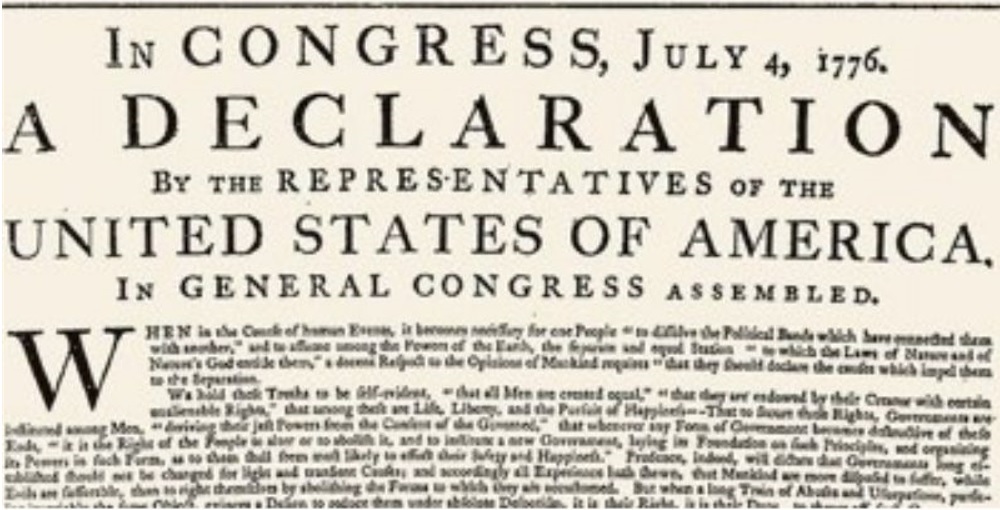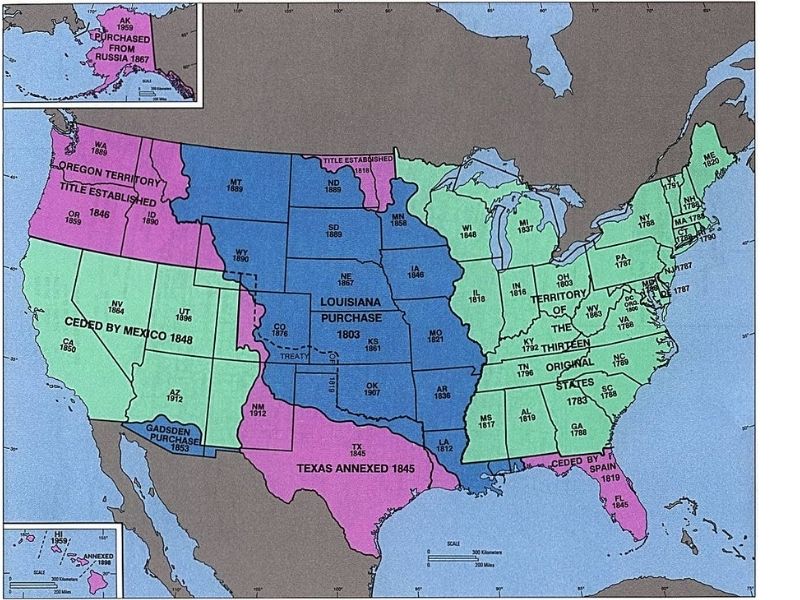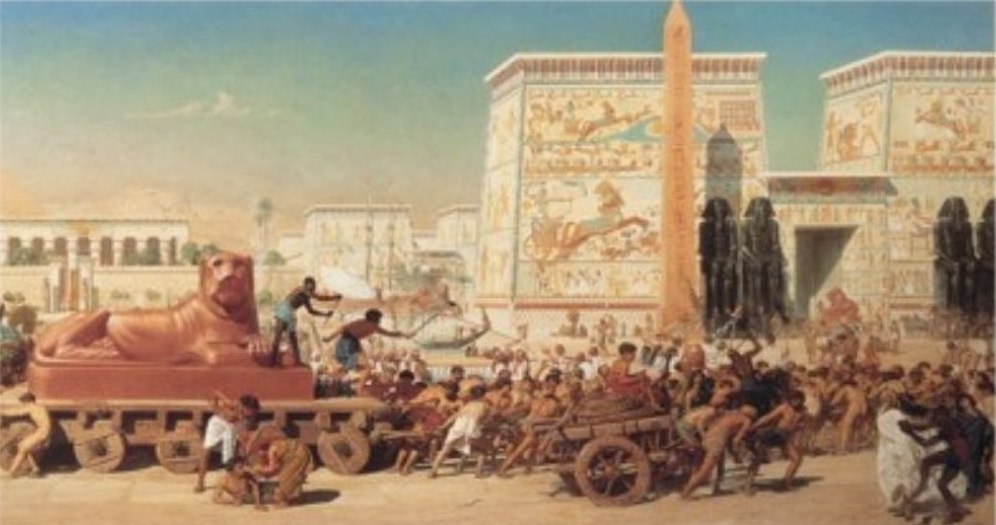
America is an achievement unequalled in history.
We planted the seeds of freedom, individual rights, and individualism in 1776 that had not existed in the history of mankind to the degree that we have today.[1] Our tree of freedom is not yet mature. Some major branches of the tree are the Fourteenth and Fifteenth Amendments, the Civil Rights Act of 1964, and the Voting Rights Act of 1965. Although America has weathered many storms such as the Civil War, it is still struggling against the onslaughts of various forms of collectivism. Whether the tree of freedom reaches full maturity is still an open question.
Introduction to the context of America’s founding
Those who criticize America’s founding fail to take into account the culture of the world then along with the specific issues the founders had to address. In looking at the birth of America, to judge the founder’s actions by today’s standards without taking into account the culture and context at the time is ignoring reality and is irrational and unjust.
This post addresses two claims: 1) that America “stole” land from the American Indians to create the country, and 2) that America was founded to preserve slavery. Other claims about America are addressed in my post on The 1619 Project.
In discussing these issues of territorial expansion and slavery (and its concomitant racism), we must take into consideration where we have come from as a country, and, most importantly, the context that it takes generations to change a global culture used to slavery, racism, and occupying conquered lands.
For an excellent and well-researched description and context of the founding, see my post America’s Revolutionary Mind. [1]
In this post I discuss two aspects of the context of America’s founding.
- Territorial expansion and historical creation of America’s land
- Historical slavery
References for Introduction
- America’s Revolutionary Mind: A Moral History of the American Revolution and the Declaration That Defined It by C. Bradley Thompson
Territorial expansion and historical creation of America’s land
In some of today’s rhetoric, it is claimed that whites “stole” land from indigenous Indian tribes. This ignores the history of how America expanded.
For millennia, a major part of the history of the world was a constant conquest of one country over another and occupation and absorption of the conquered country or tribe, often with slavery of the conquered people. The world had not yet discovered individual rights, which includes land ownership and property rights. Sadly, many countries today have yet to discover them.
Here are some examples of territorial expansion by conquest, which you may (hopefully) remember from your history lessons.
- Roman empire expansion by conquest
- European colonization in Africa by Britain, France, Spain, Germany, Belgium, Italy, and Portugal, all by conquest
- Spanish and Portuguese conquests of Central and South America
- Islamic conquests of the Middle East, northern Africa, southern Europe, and India
- British colonization around the globe by conquest
- Ethiopia expansion in Africa by conquest
- Various tsars of Russia expanding its boundaries by conquest
- Various dynasties of China expanding its boundaries by conquest
For more perspective, here is a 4,000-year visual history of the world. (It’s too big to fit on this post.) Note how recent the United States is.
This was the cauldron from which America was born.
With that in mind, it is important to understand the context of exactly how the United States territorial expansion happened throughout the years of its existence. Before the United States became a country, the land in North America was “claimed” by England, France, Spain, Mexico, and Russia. [1]

- England – most of the land east of the Mississippi River, the northwestern US, and northern Minnesota
- France – most of the land in the Mississippi River basin west of the Mississippi River
- Spain – Florida
- Mexico – Southwestern US including California and Texas
- Russia – Alaska
All of the land was “claimed” or “owned” by these five countries before the United States came into existence. As a country, America fought the British for its initial geography in the name of individual rights so it would not remain a colony. Then through various battles, treaties, and purchases, we became the geographic country we are today.
Afterwards, we sometimes recognized that certain territories belonged to Native Americans, notwithstanding the claims of the five countries above. But to say that we “stole” the land from Native Americans ignores the above historical facts of foreign claims and domination.
In addition, we do not know what Indian tribes “stole” what land from other conquered Indian tribes before we came upon the scene. We do know that there were wars between Indian tribes and that victorious tribes sometimes made slaves out of conquered Indians. All this before Columbus set foot on the Bahamas in 1492. So, who knows who the original “owners” really were. [2]
Just as we have much to be ashamed of regarding racism and slavery, so we have much to be ashamed of regarding how we treated indigenous peoples, through broken treaties and bloody massacres. We were still evolving from the muck of “might makes right” of colonialism and collectivism.
However, consider that after World War II, the United States did not acquire as a colony or territory the conquered countries of Germany and Japan. We recognized they were sovereign entities in their own right and we did not impose any expansionist colonizing actions over them. This was a break in the history of wars over the centuries. Again, it takes generations to change a culture of territorial expansion by conquest.
In summary, the notion that we “stole” land from native Indians to form our country is false.
References for Territorial Expansion
- https://en.wikipedia.org/wiki/Territorial_evolution_of_the_United_States
- http://plainshumanities.unl.edu/encyclopedia/doc/egp.war.023
Historical Slavery

Slavery has existed for millennia. The history of slavery spans many cultures, nationalities, and religions from ancient times to the present day. Likewise, its victims have come from many different ethnicities and religious groups. The social, economic, and legal positions of slaves have differed vastly in different systems of slavery in different times and places.
Slavery’s Roots: War and Economic Domination [1]
- 6800 B.C. The world’s first city-state emerges in Mesopotamia. Land ownership and the early stages of technology bring war—in which enemies are captured and forced to work: slavery.
- 2575 B.C. Temple art celebrates the capture of slaves in battle. Egyptians capture slaves by sending special expeditions up the Nile River.
- 550 B.C. The city-state of Athens uses as many as 30,000 slaves in its silver mines.
- 120 A.D. Roman military campaigns capture slaves by the thousands. Some estimate the population of Rome is more than half slave.
- 500 Anglo-Saxons enslave the native Britons after invading England.
- 1000 Slavery is a normal practice in England’s rural, agricultural economy, as destitute workers place themselves and their families in a form of debt bondage to landowners.
- 1380 In the aftermath of the Black Plague, Europe’s slave trade thrives in response to a labor shortage. Slaves pour in from all over the continent, the Middle East, and North Africa.
- 1444 Portuguese traders bring the first large cargo of slaves from West Africa to Europe by sea—establishing the Atlantic slave trade.
- 1526 Spanish explorers bring the first African slaves to settlements in what would become the United States. These first African-Americans stage the first known slave revolt in the Americas.
- 1550 Slaves are depicted as objects of conspicuous consumption in much Renaissance art.
- 1641 Massachusetts becomes the first British colony to legalize slavery.
Here are some elaborations on slavery.
Medieval Slavery in Europe [2]
“King Charlemagne is responsible for uniting large parts of West and Central Europe at the outset of the Middle Ages. This unification came about through war and violence and many of his campaigns involved taking slaves and selling them to the highest bidders. Throughout his reign, European slaves became wildly popular throughout Muslim countries, marking the true beginning of the global slave trade. Throughout this period in history, Vikings were also taking slaves across Europe, concentrating heavily on The British Isles. Additionally, Spain and Portugal were in an almost constant state of Holy War between Muslims and Christians, leading to many women and children being taken into slavery in the name of God or Allah.”
Medieval Slavery in Asia [2]
“Throughout the Middle Ages slavery was also taking root in Asia as Islamic invasions of India resulted in the enslavement of hundreds of thousands of Indians. One historical record shows that in the year 1001 the armies of Mahmud of Ghazna conquered Peshawar and Waihand, capturing and enslaving roughly 100,000 children and young people.
“During this same time period in China, documents show that royals from the Tang Dynasty purchased many European and Jewish slaves. The soldiers and pirates who serve the Tang Dynasty also took countless slaves in raids on Korea, Turkey, Persia and Indonesia as well as thousands of slaves taken from indigenous Aboriginal tribes.”
Slavery Among Native Americans [3, 4]
“Native Americans enslaved members of their own and other tribes, usually as a result of taking captives in raids and warfare, both before and after Europeans arrived. This practice continued into the 1800s. In some cases, especially for young women or children, Native American families adopted captives to replace members they had lost. Enslavement was not necessarily hereditary. Slaves included captives from wars and slave raids; captives bartered from other tribes, sometimes at great distances; children sold by their parents during famines; and men and women who staked themselves in gambling when they had nothing else, which put them into servitude in some cases for life.”
In summary, the culture of the world at the time of America’s founding was that slavery was a normal and accepted practice. The founding was a start to dismantle that notion. It takes generations to change a culture, as you can’t change it overnight, and it has taken generations to abolish slavery.
As I have been told, you climb a mountain one step at a time.
References for Historical Slavery
- Slavery in Historyhttps://www.freetheslaves.net/about-slavery/slavery-in-history/
- The History of Slavery https://restavekfreedom.org/2018/09/11/the-history-of-slavery/
- Slavery in the colonial history of the United States https://en.wikipedia.org/wiki/Slavery_in_the_colonial_history_of_the_United_States
- https://nationalvanguard.org/2020/07/slavery-nearly-universal-among-native-american-indian-tribes-prior-to-white-settlement/
Photo Credits
- Top of Declaration of Independence: Unknown Author licensed by CC BY
- Map of United States: Unknown Author U.S. Census Bureau
- Slaves pulling wagons: Unknown Author licensed by CC BY-NC-ND
